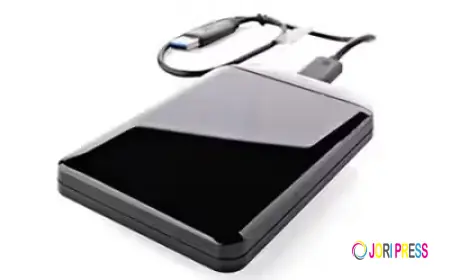Top Feeler Gauge Options for Machinists, Mechanics & Technicians
Find the best feeler gauge options for machinists, mechanics, and technicians. Compare durability, thickness ranges, and accuracy to choose the right gauge.
How a Feeler Gauge Improves Accuracy in Industrial Calibration Tasks
In precision engineering, even the tiniest space matters. Whether working on an engine, aligning parts of a machine, or measuring spacing for a tool, the accuracy you're able to obtain will depend on which tool you decide to use. In a world of measuring devices, measuring gaps with a feeler gauge is one of the simplest and most fundamental tools to get perfect calibration of a machine.
Performance, reliability, and safety are all dependent on accurate spacing. If tolerances and/or gaps are just off, you could experience excessive wear, unexplainable vibration, heat buildup, or inconsistent output. These are a few of the reasons why a gauge is a must, because the technician can trust the measurement being taken & space being adjusted.
Understanding What a Feeler Gauge Actually Does
A gauge consists of a collection of flat metal strips of varying thicknesses for measuring the space or clearance between two parts. Using gauge blades, technicians can check the gap between two components to allow parts to remain within specified tolerances or to evaluate the need for adjustment. Different applications will require different-sized blades, and the measurement is typically identified using a feeler gauge size chart to help speed up the process of selecting a blade. This is particularly useful in applications that are bound to both time and consistency to ensure proper use and measurement. Some modern tools can also show some degree of accuracy down to a specific unit known as the feeler gauge least count that helps identify the minimum thickness the tool will reliably indicate.
Why a Feeler Gauge Is Critical for Machine Calibration
1. Ensures Accurate Clearance
Machine calibration is all about achieving the correct distance between components. Even a minor error can cause parts to collide, wear prematurely, or work inefficiently. A gauge provides a fast and dependable method to confirm whether the clearance meets the required specification.
2. Prevents Mechanical Failures
Improper gaps can lead to overheating, misalignment, and even complete equipment failure. When you regularly check spacing using a gauge, you prevent small issues from turning into costly repairs or breakdowns.
3. Guarantees Consistent Machine Output
Industries such as CNC machining, automotive repair, and manufacturing depend on consistency. With a gauge, technicians verify the spacing during setups, tooling changes, and maintenance, keeping output stable and precise.
4. Suitable for Multiple Industrial Applications
A feeler is used across various tasks:
-
Valve clearance checks
-
Spark plug adjustments
-
Tool alignment
-
Shim calibration
-
Mechanical assembly
-
CNC machine setups
Because the tool comes in multiple thicknesses, technicians often refer to feeler gauge sizes in mm when selecting blades for accurate spacing.
Choosing the Right Feeler Gauge for Industrial Use
Selecting the right gauge depends on a few key factors. High-quality materials like stainless steel ensure durability and resistance to corrosion. Flexibility also matters—some applications require more bendable blades, while others need rigid ones.
Users also compare tools based on gauge price, which can vary depending on blade count, material quality, and measurement range. While budget tools work for general tasks, professionals typically prefer industrial-grade sets for long-term accuracy.
Understanding Feeler Gauge Sizes and Accuracy
A high-end tool will offer uniform thickness across all blades, ensuring consistent readings. When working with critical components, the feeler gauge size chart becomes handy for selecting the exact blade required for precise calibration.
Along with that, understanding the feeler gauge least count helps operators know how finely they can measure. These details matter, especially in tasks where even 0.01 mm can make a difference.
Tips for Using a Gauge Effectively
-
Clean the blades before and after use to avoid inaccurate readings.
-
Insert the blade gently—there should be a slight drag when the gap is correct.
-
Never force a blade between parts; this may damage the tool or the machine.
-
Store the gauge set in a protective case to prevent corrosion or bending.
-
Always cross-check measurements when working with critical tolerances.
FAQs
1. What is a feeler gauge used for?
It is used to measure the gap or clearance between two components, ensuring accurate alignment and machine calibration.
2. How do I read a feeler gauge correctly?
Each blade has a thickness marking. Insert the blade into the gap—if it slides with slight resistance, the measurement is correct.
3. Is a feeler gauge available in both inches and millimeters?
Yes, most sets come with thickness values in both units, including a detailed blade range that matches feeler gauge sizes in mm.
4. What factors affect gauge price?
Blade material, total blade count, measurement range, and brand reputation influence pricing.
5. Can I use multiple blades together?
Yes, stacks of blades can be combined to achieve a specific thickness when a single blade doesn't match the required clearance.
Conclusion
Although a feeler gauge may seem basic, nothing is better for achieving perfect machine calibration. It doesn’t matter whether you are performing automotive repair, CNC machining, or maintaining some other industrial equipment. The right instrument is going to provide you with precise spacings, safe and reliable operations, and long machine life. Hundreds of thousands of technicians use gauges like these in so many different ways to ensure complete precision, consistency, and safety.
When searching for durable, high-quality industrial tools, Jaibros has a reliable and trustworthy line of measurement instruments for all your calibration needs and for professionals seeking accuracy and reliability. Their instruments are built to provide reliable performance regardless of your calibration task.
What's Your Reaction?
 Like
0
Like
0
 Dislike
0
Dislike
0
 Love
0
Love
0
 Funny
0
Funny
0
 Angry
0
Angry
0
 Sad
0
Sad
0
 Wow
0
Wow
0



















































